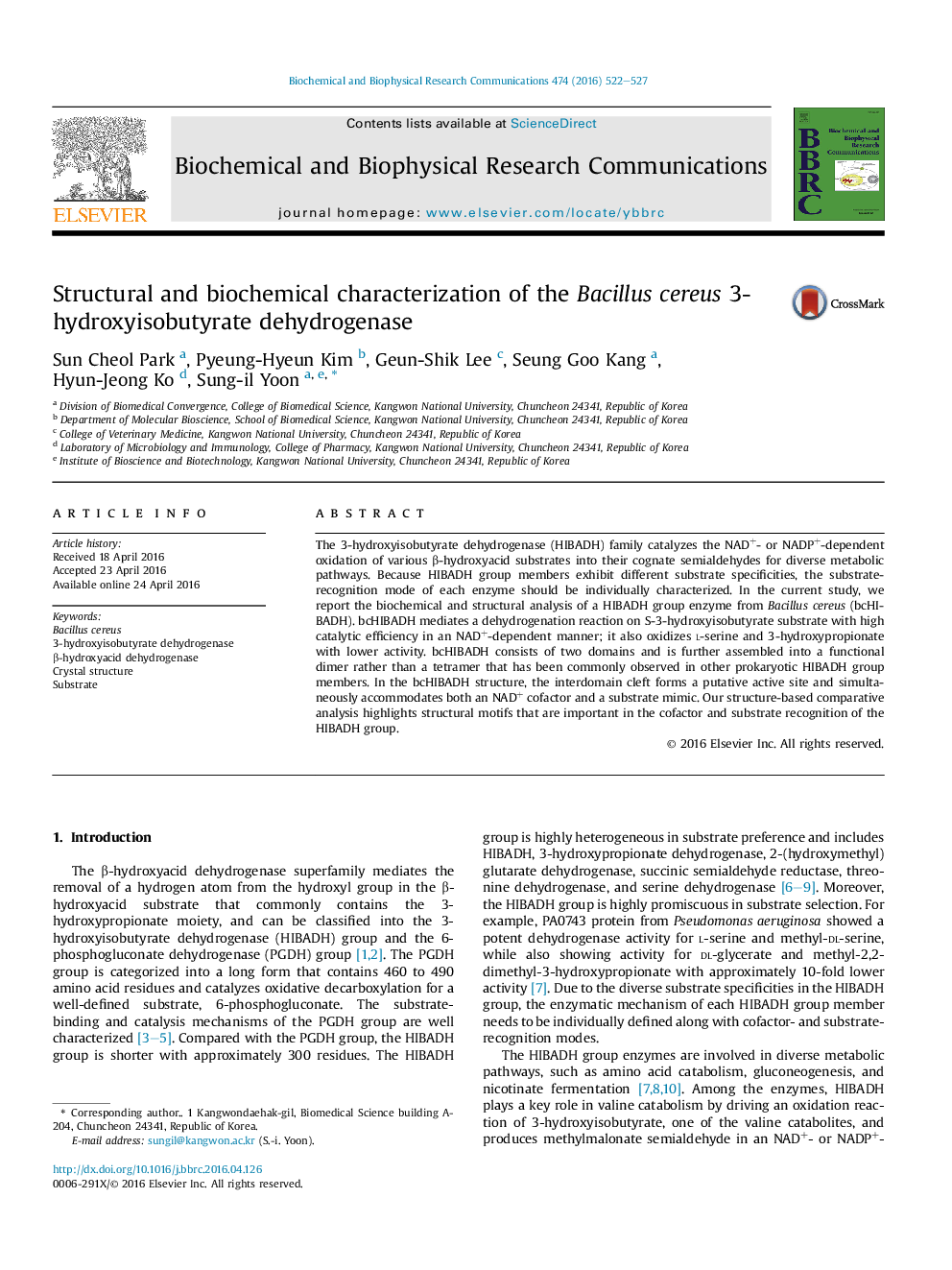| Article ID | Journal | Published Year | Pages | File Type |
|---|---|---|---|---|
| 10748298 | Biochemical and Biophysical Research Communications | 2016 | 6 Pages |
Abstract
The 3-hydroxyisobutyrate dehydrogenase (HIBADH) family catalyzes the NAD+- or NADP+-dependent oxidation of various β-hydroxyacid substrates into their cognate semialdehydes for diverse metabolic pathways. Because HIBADH group members exhibit different substrate specificities, the substrate-recognition mode of each enzyme should be individually characterized. In the current study, we report the biochemical and structural analysis of a HIBADH group enzyme from Bacillus cereus (bcHIBADH). bcHIBADH mediates a dehydrogenation reaction on S-3-hydroxyisobutyrate substrate with high catalytic efficiency in an NAD+-dependent manner; it also oxidizes l-serine and 3-hydroxypropionate with lower activity. bcHIBADH consists of two domains and is further assembled into a functional dimer rather than a tetramer that has been commonly observed in other prokaryotic HIBADH group members. In the bcHIBADH structure, the interdomain cleft forms a putative active site and simultaneously accommodates both an NAD+ cofactor and a substrate mimic. Our structure-based comparative analysis highlights structural motifs that are important in the cofactor and substrate recognition of the HIBADH group.
Related Topics
Life Sciences
Biochemistry, Genetics and Molecular Biology
Biochemistry
Authors
Sun Cheol Park, Pyeung-Hyeun Kim, Geun-Shik Lee, Seung Goo Kang, Hyun-Jeong Ko, Sung-il Yoon,
